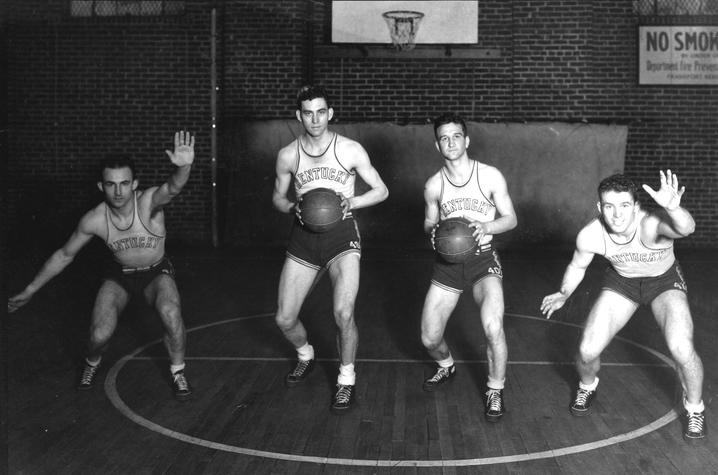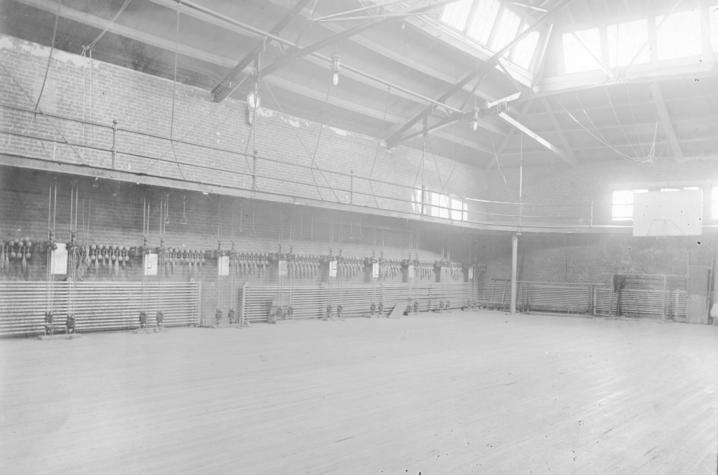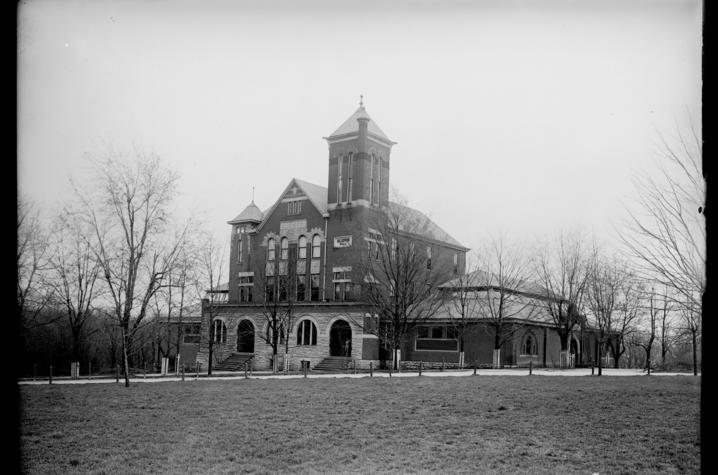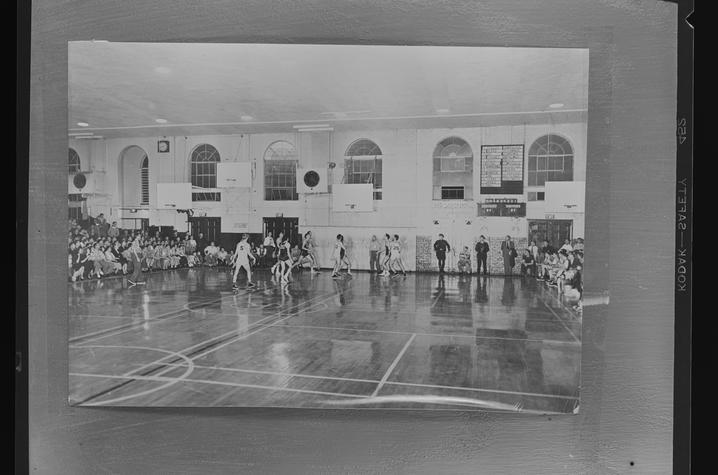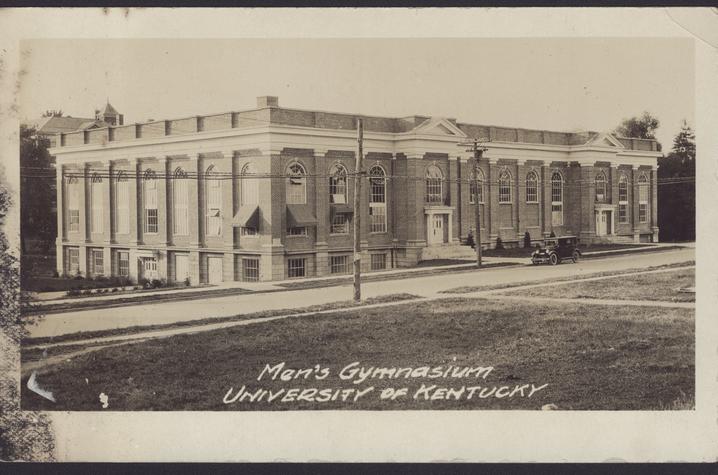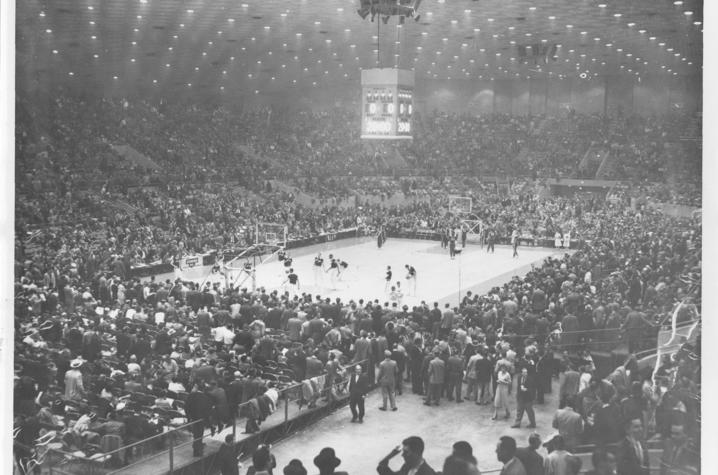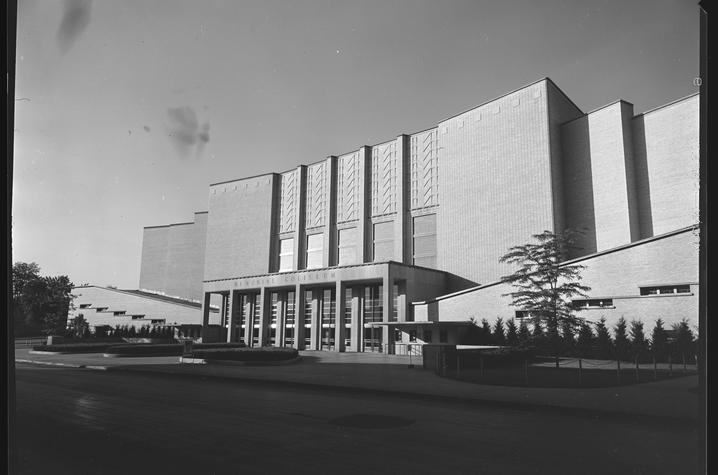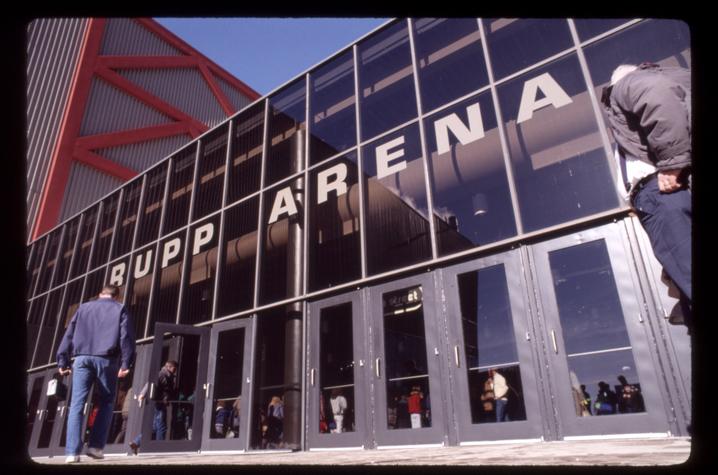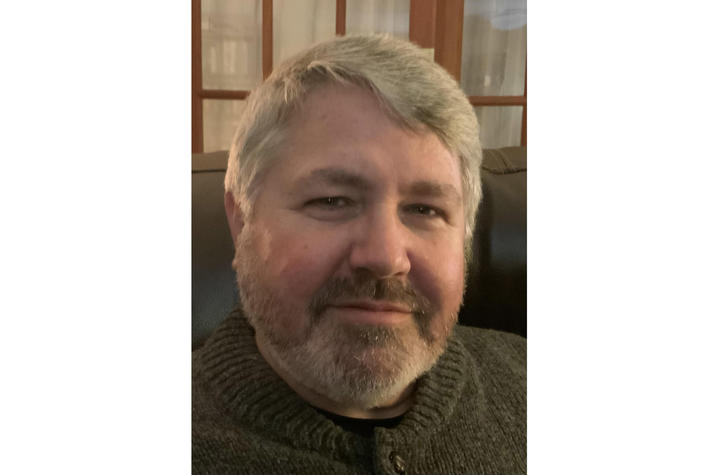‘House of Champions’: A look into UK men’s basketball’s hallowed halls
LEXINGTON, Ky. (Oct. 14, 2022) — Thousands of Wildcat fans will pile into Rupp Arena tonight to attend Big Blue Madness — a time-honored tradition for the Big Blue Nation. Many of these devotees have grown up with UK basketball while others may have found their way to fandom as adults. Nonetheless, Big Blue Nation is made up of a fierce and loyal community dedicated to cheering on the Cats.
Some devotees can recite the names and numbers of every blue and white jersey that has adorned the UK men’s basketball team. Others have seared into memory the team records, score boards and stats. But what about the venues that have housed the games — the floors and halls that have echoed the sights and sounds of this historic team over the years? How does a space contribute to a fan base’s culture and history?
We spoke with Kevin Cook, Kentucky basketball fan and author of the soon-to-be-released “House of Champions: The Story of Kentucky Basketball’s Home Courts,” published by the University Press of Kentucky, to learn more about the history of the spaces the UK men’s basketball team has called home.
***
UKNow: What is your connection to the university and UK men’s basketball?
Cook: I live in Wilmore, in Jessamine County. The way that I originally got connected to UK is through my dad, who was a Navy chaplain. He came here to Asbury Seminary back in the mid-1960s, the year of "Rupp’s Runts." I was 1 year old at the time. My dad, who played basketball in high school, really enjoyed listening to that season on the radio and reading about it in the papers and became a big UK basketball fan.
I was the third of four brothers and growing up, we all loved basketball. We moved around in the military — to Hawaii, Virginia, California, etc. But we would come back to the Lexington area for a year — such as when I attended Asbury College for a year. We would come back and get really involved in the Big Blue Nation. Back when I was growing up, there weren’t a lot of games that we could see on TV. Radio was sort of hit and miss depending on where we lived — though we could usually pick up Cawood Ledford calling the games. I eventually went to the University of South Carolina for Navy ROTC but my home and heart is always first with UK basketball. Growing up, I always followed it while living in different places.
UKNow: What kind of research did you do for this book? Were any UK resources helpful?
Cook: I personally talked to a lot of people. I spoke to Coach Joe B. Hall a couple times, for example, asking him things. But there is a wealth of recorded oral interviews on the UK website — a lot of them done by former player Kyle Macy. Oscar Combs had a podcast that I listened to, with hour-long interviews with players going back to the 1940s. I spent what seems like a lifetime looking at pictures on the UK Libraries Special Collections Archives website.
The fact that these things are online — I couldn’t have done this book without them. I couldn’t have done it if I couldn’t have conducted this research virtually. Because I was learning about old arenas that had changed so much over the years, a lot of what I garnered was visual. So, I was looking at a lot of pictures and deciphered what year they were taken to see what changed and when.
For example, in the old Alumni Gym, I pieced together the changes over time from clues. I really enjoyed that. I’d use my iPad to blow up the pictures and see the little details. It took a little bit of detective work. I also looked at old copies of the student newspaper.
Claude Sullivan started calling the UK games on radio before Cawood Ledford, and his son, Alan Sullivan, put many audio recordings of Claude on the UK Archives website. You can listen to his broadcasts, hear the cheers and hear how the games started. You can hear what the pre-game ceremony was like: they started with a prayer for world peace because they were in Memorial Coliseum which was a monument to the Kentucky war dead of World War II. You could hear the chants, how they introduced the teams and hear the traditions.
UKNow: Through your research for this book, what’s something you learned that you wish more Kentucky basketball fans knew about the teams and places you discovered? Did anything surprise you?
Cook: All of the arenas that UK men’s basketball has played in are still around, and that goes back to 1903 in the building that is now known as Barker Hall. There are two wings to Barker Hall: one side is where the ROTC units are, and one side is a dance studio now. At one point in time, both of those sides were also gymnasiums that the men’s basketball team played in. Those spaces are much different now. Then of course you have Alumni Gym. It’s been saved but the insides have been completely gutted to create a fitness center — almost none of the basketball history was preserved. Memorial Coliseum was the next step and a lot of it remains original.
It surprised me that all these places are still there. They’re not necessarily in their original form, but they’re all there. A lot of people don’t know there was somewhere before even Alumni Gym. There are actually the two places in Barker Hall and they are still here.
Another interesting thing I found out is the context of these places — the politics of the state, city and the university. So many of the problems we face today with construction and building happened then, too.
A lot of people don’t know about Adamstown, which was one of the early Black communities near campus, which was exactly where Memorial Coliseum now stands. There is now a historical marker dedicated to that near the Joe Craft Center.
UKNow: How does the physical space of something — an arena, a gym — contribute to a team’s story? Why are these physical spaces important?
Cook: A team can play anywhere. They can play on a playground court. But these arenas are gathering spaces for the community. It’s where they come and identify as Lexingtonians, Kentuckians or UK students, staff or alumni. They come, they know the cheers, they know what to wear. They know the history. They look up: in Rupp Arena you can see these banners and that connection through time. Each of these arenas are separate, but they are like a string of pearls. They hop from one to the other, taking the history from one to the next.
Kentucky almost lost the last game at Alumni Gym. Coach Rupp at halftime said he’d burn the building down if they lost! They ended up winning, but it was so important to not break that history. He was determined that his team would leave as winners and enter the next place as winners.
Another purpose of the book is to try and give people today — whether or not they experienced it themselves — what it was like to go to a game in each of these arenas. If nothing else, I wanted people to know why these places were special and what it was like to be there.
***
Kevin Cook has degrees in engineering and American history. His published works include a comprehensive study of the Rochester Royals' NBA franchise in “Rochester History,” articles in the Jessamine Journal and German Life, and a self-published travel memoir titled “Where Am I, Rick Steves? A Mis-Guided Tour of Europe's Back Doors.” He has worked as a naval officer, a high school teacher and a corporate sales representative, and lives in Jessamine County, Kentucky.
As the state’s flagship, land-grant institution, the University of Kentucky exists to advance the Commonwealth. We do that by preparing the next generation of leaders — placing students at the heart of everything we do — and transforming the lives of Kentuckians through education, research and creative work, service and health care. We pride ourselves on being a catalyst for breakthroughs and a force for healing, a place where ingenuity unfolds. It's all made possible by our people — visionaries, disruptors and pioneers — who make up 200 academic programs, a $476.5 million research and development enterprise and a world-class medical center, all on one campus.





